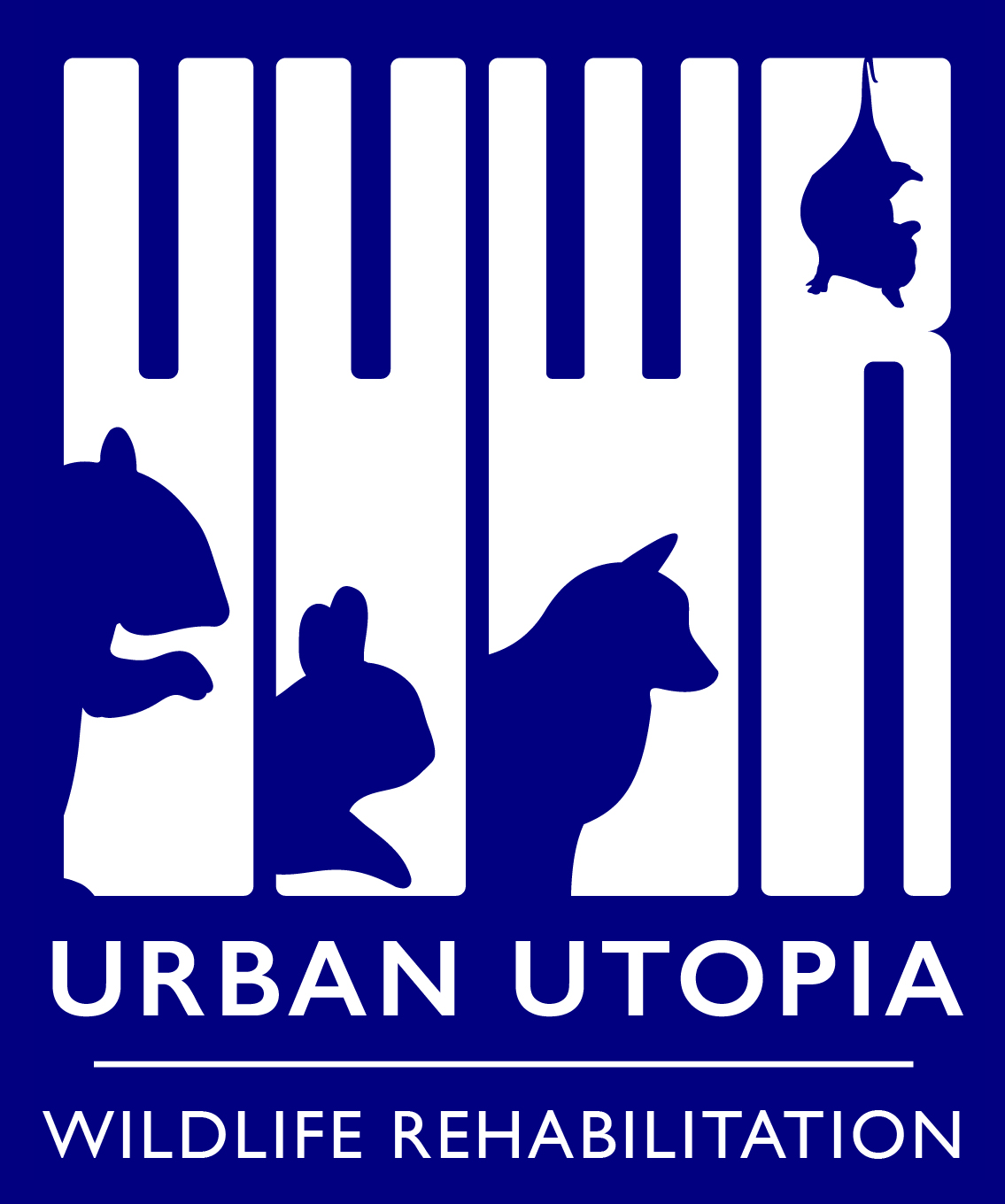What is wildlife rehabilitation?
by Adair Moran
The goal of wildlife rehabilitation is to treat sick, injured, orphaned, and otherwise distressed wildlife, and release them back into their natural habitat. Rehabilitators must have a state issued rehabilitation license, and certain species require an additional federal rehabilitation license, or an RVS (Rabies Vector Species) license.
In addition to hands-on caring for animals, rehabilitators often serve as ambassadors between wildlife and the community. Education is an important part of wildlife rehabilitation, and teaching the public about wildlife is vital to keeping both animals and humans safe. It's important for members of the public to know when wildlife needs help and when they should be left alone, how to protect themselves from contagious disease, and how to support the habitats of local wildlife so animals may thrive.
Wildlife rehabilitators spend a lot of time dispelling myths. I'll bet you've heard that if you touch a baby bird its mother will reject the baby (false); or that raccoons seen during the day are always rabid (also false); or that you'll get warts if you touch a toad (super false); or that bats will swoop down and get tangled in your hair (super-duper false). With so much misinformation out there, it's important to have local rehabbers who can set the record straight.
Wildlife rehabilitation is occasionally glamorous, but most often, well....not. As rehabilitators we do get to handle cute, squirming baby squirrels, rabbits, and other undeniably adorable creatures. We get to bathe oiled birds, and facilitate reunites between baby animals and their mothers. However, wildlife rehabilitation is also hard and dirty work. Rehabilitators get pooped on. A lot. We get scratched, bitten, and pecked on a regular basis. We spend sleepless nights caring for the babies who eat round-the-clock. We get pooped on a lot. We clean up enormous messes. We must keep up-to-date on vaccines to prevent zoonotic diseases (diseases that are transferable between animals and humans). We must identify and treat parasites. Also, did I mention we get pooped on a lot?
Hardest of all for rehabilitators, we often receive animals who have experienced tremendous suffering. We became rehabbers because we love animals, and the sight of animals who come in freezing cold, hungry, hit by cars, bitten by dogs, and worst of all, abused by humans, will haunt even the most experienced rehabbers. Rehabilitators are also involved in making decisions about when to euthanize a suffering or non-releasable animal; these decisions can be heartbreaking, especially when it is an animal you have come to know and love. Nevertheless, as rehabilitators we have to learn to put the animals' best interests first and our own feelings second. According to the NY Department of Environmental Conservation, rehabilitators should be prepared for 50% of the animals who come to them to die or require euthanasia. These are difficult odds, but we keep at it for the 50% we can save. It’s all worth it to watch the successfully rehabilitated animals joyfully run, fly, hop, slither, and scurry back into their natural habitats where they belong
Every rehabilitator must understand the difference between wildlife and domestic animals, and be able to impart this distinction to the public. A rehabilitator can't risk allowing the animals to tame or imprint, and a rehabilitator is never allowed to cuddle or play with the animals (no matter how cute they are!) It is illegal to keep wildlife as pets, yet people do it anyway, and the results are usually disastrous. Often animals raised in captivity will be brought to rehabbers when they reach adulthood and become aggressive. By that point they are too domesticated to be returned to the wild and often have to be euthanized. Nothing makes rehabbers sadder than to see an animal's life so directly destroyed by humans. The only way to prevent cases like this is through education.
Wildlife is part of what makes New York City great, and we created UUWR so we can keep the city a habitat where humans and animals thrive together. With help from our community, we can make the city a safe and happy place--for everyone.



